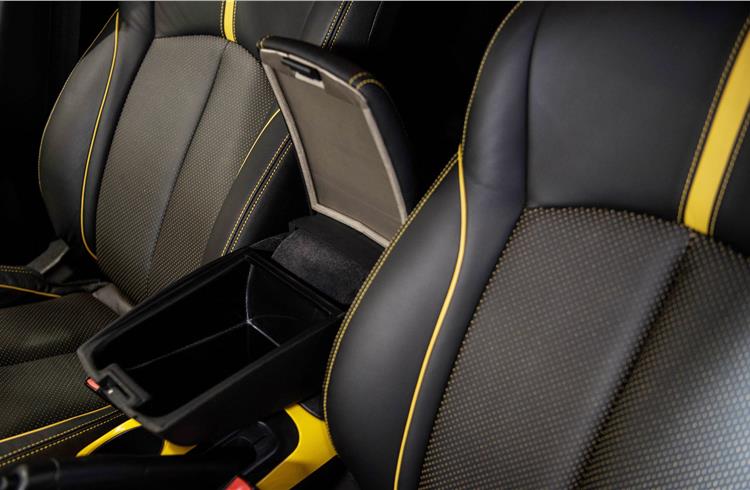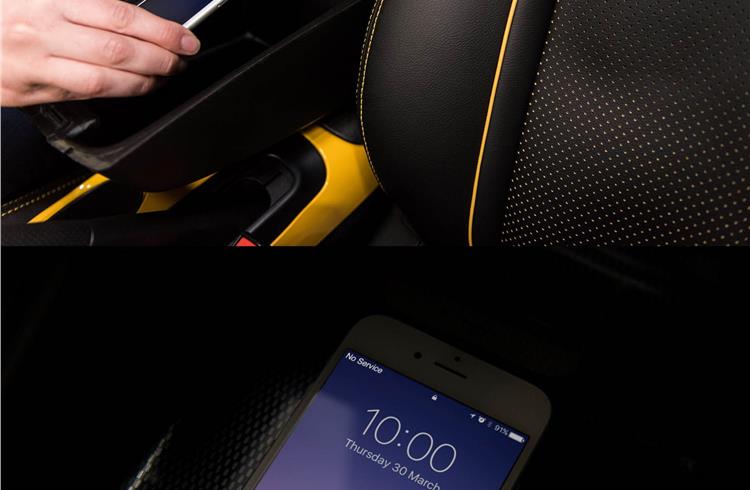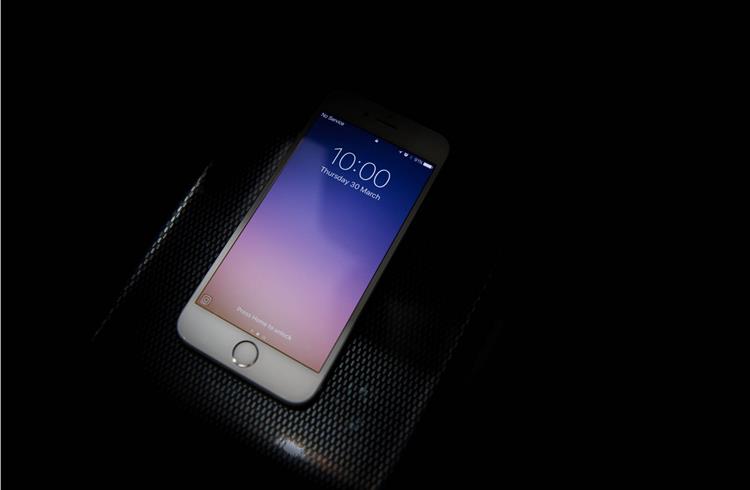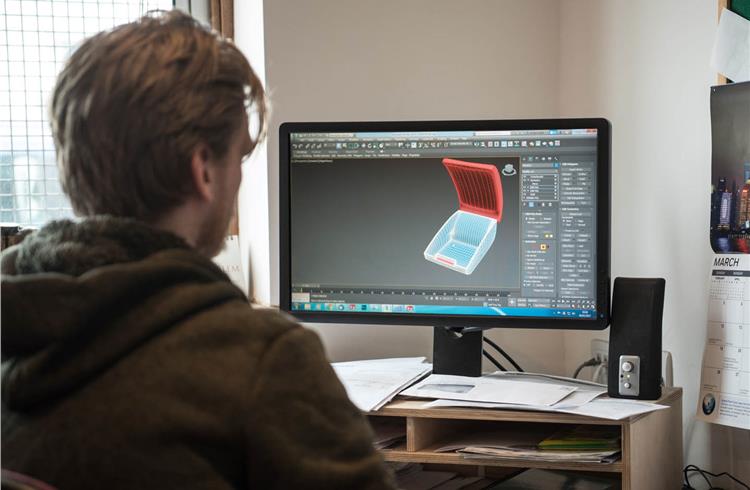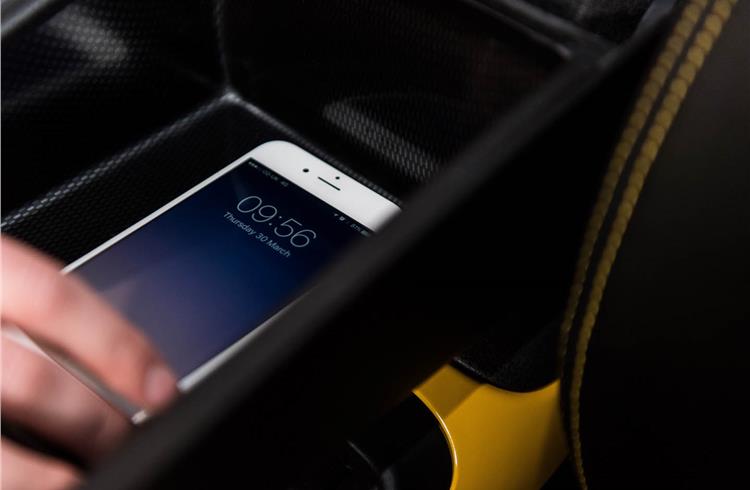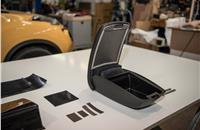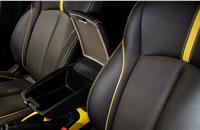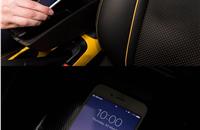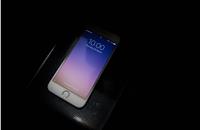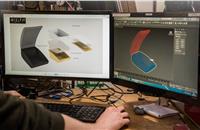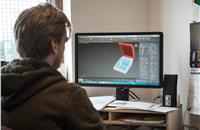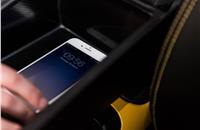Digital detox: Carmaker may have a solution for distracted driving problem
Nissan Signal Shield concept creates in-car compartment that blocks all cellular, Bluetooth and Wi-Fi signals, thereby reducing smartphone distraction at the wheel.
It’s a Victorian invention but now gets 21st century application. Nissan Great Britain has adopted a technology that's almost 200 years old to create a concept solution for reducing smartphone distraction at the wheel.
The Nissan Signal Shield is a prototype compartment within the armrest that is lined with a Faraday cage, an invention dating back to the 1830s. When a mobile device is placed in the compartment and the lid closed, the Nissan Signal Shield creates a ‘silent zone’, blocking all of the phone's incoming and outgoing cellular, Bluetooth and Wi-Fi connections.
The concept is designed to give drivers a choice about whether to eliminate the distractions caused by the millions of text messages, social media notifications and app alerts that are pushed to smartphones each day.
The Nissan Signal Shield concept provides optional connectivity, giving drivers the choice between being able to contact and be contacted from the road, or creating a ‘phone-free’ space and time. It means a digital detox and a drive that's free of incoming distractions.
If drivers want to listen to music or podcasts stored on their smartphone, they can still connect to the car's entertainment system via the USB or auxiliary ports. The device will maintain wired connectivity even when in the Nissan Signal Shield compartment.

Distracted driving, a growing problem
Cellphone-distracted driving is a growing problem the world over including India. According to the UK's RAC, an automobile services company, the number of drivers admitting to handling their phone in the car has increased from 8 percent in 2014 to 31 percent in 2016. Users are becoming habitually more tempted to check text messages and notifications as they appear on their phone's screen, even if they are driving. Nissan's own research found almost one in five drivers (18 percent) admitted to having texted behind the wheel.
To restore the phone's wireless connections, drivers just need to open the armrest to reveal the compartment – which can be done without taking eyes off the road or touching the phone itself – and the phone can reconnect with the mobile network and the car's Bluetooth system.
The innovation works on the principle of the Faraday cage, an enclosure made of a conductive material, such as wire mesh, which blocks electromagnetic fields. It is named after the pioneering English scientist Michael Faraday, who invented it in the 1830s.
When an electronic device like a smartphone is placed inside, any incoming electromagnetic signals – such as cellular or Bluetooth data – are distributed across the cage's external conducting material and prevented from reaching the device.
Keeping ‘pushed’ communications at bay
"Nissan produces some of the safest cars on the road today, but we are always looking at new ways to improve the wellbeing of our customers," said Alex Smith, managing director, Nissan Motor GB. "Mobile phone use at the wheel is a growing concern across the automotive industry, and indeed society, particularly with the high number of ‘pushed’ communications, such as texts, social media notifications and app alerts that tempt drivers to reach for their devices. The Nissan Signal Shield concept presents one possible solution for giving drivers the choice to remove all smartphone distractions while driving. This is about delivering more control at the wheel, not less. Some drivers are immune to the activity of their smartphone, but for those who struggle to ignore the beeps and pings, this concept provides a simple solution in this very ‘connected’ world we live in."

RAC road safety spokesman Pete Williams said: "Our research shows that handheld phone use by drivers has reached epidemic proportions. As mobile phone technology has advanced significantly, many people have become addicted to them. However, the use of a handheld phone when driving represents both a physical and mental distraction and it has been illegal since 2003. The Nissan Signal Shield is a good example of a technology that can help drivers be phone smart. For those who can't avoid the temptation, this simple but pretty clever tech gives them a valuable mobile-free zone. We are asking all drivers to make a personal commitment not to use a handheld phone at the wheel and sharing their promise with their friends and family.”
Compulsive habit, says US study
A U.S study of over 1,000 drivers in 2014 found that 98 percent agreed it was dangerous to text and drive, but 74 percent claimed they had done so with 30 percent saying it is ‘simply a habit’ because they are so used to being connected to their phone, and they believed their driving performance was not impacted by texting.
Dr. Greenfield, founder of The Center for Internet and Technology Addiction and Assistant Clinical Professor of Psychiatry at The University of Connecticut School of Medicine, who worked on the report, said at the time of publication: "We compulsively check our phones because every time we get an update through text, email or social media, we experience an elevation of dopamine, which is a neurochemical in the brain that makes us feel happy. If that desire for a dopamine fix leads us to check our phones while we're driving, a simple text can turn deadly."
Research by Nottingham Trent University found that the average user checks their phone 85 times a day and that 'rapid mobile phone interactions', less than 30 seconds, are becoming habitual for smartphone users, with many not realising the frequency with which they check their phone.
Young drivers in particular are more likely to be distracted. Just under half of drivers (49 percent) aged 25–34 admitted they sometimes go online or use apps while driving. Almost a third of drivers in the same age group said they do this several times a week at least.
These compulsive habits are both dangerous and illegal. Drivers are four times more likely to be in a crash if they are using a phone whilst driving, and their reaction times are two-times slower than those drink-driving.
The UK introduced stricter penalties in 2017 for drivers caught using a mobile phone behind the wheel – six penalty points and a £200 fine.
ALSO READ: First India distracted driving study reveals high level of cellphone use
RELATED ARTICLES
Kia displays EV5 and Sonet SUVs for Chinese market
Kia has unveiled a number of key models and new technologies for Chinese customers at the 2024 Beijing International Aut...
Nissan targets growth in China, unveils four NEV concepts at Beijing Motor Show
The two EVs and two plug-in hybrids are a joint effort with Nissan’s local partner Dong Feng and aimed to better address...
Lamborghini unveils Urus SE ahead of Auto China 2024
Electric-only range of 60km helps reduce emissions by 80%.





 By Autocar Pro News Desk
By Autocar Pro News Desk
 05 May 2017
05 May 2017
 4064 Views
4064 Views




